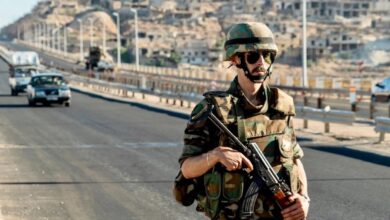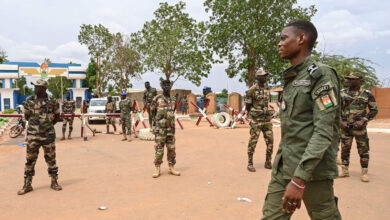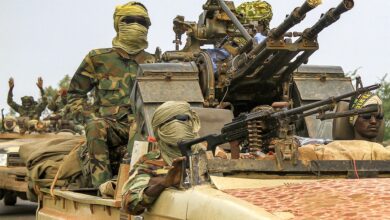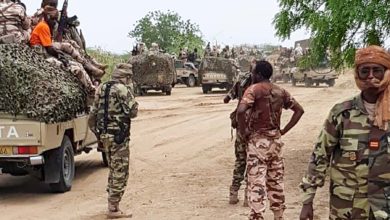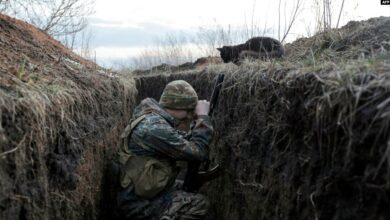
By Allison McManus
Tahrir Institute for Middle East Policy
On Friday, February 9, the Egyptian Ministry of Defense published a statement announcing an escalated military campaign in the North Sinai, Western Desert, and areas of the Nile Delta, all of which have seen major terrorist attacks in the past year on both civilians and security personnel. The “comprehensive plan,” declared the statement, will include operations to “clear” the areas of militants, protect Egyptian society from the threats of terrorism and extremism, and address “other crimes affecting security and stability.”
The campaign has been anticipated since the late November attack on the Rawda mosque outside of the town of Bir al Abd, to the west of North Sinai’s capital city of al Arish. This attack, the deadliest ever recorded on Egyptian soil, killed 311 people worshiping at the mosque, and bore retributive and sectarian elements. After the attack, President Abdel Fattah al Sisi declared that he would eradicate the threat of terrorism with escalated measures, including any brute force necessary, and he called on the military to do so within three months. Friday’s campaign announcement clocks in just over two weeks before this deadline.
It is still far too early to determine what success this campaign might see in addressing an insurgency that has been developing in the Sinai since 2013, or in mitigating a growing threat to Egypt’s western desert. It is certain that it will be next to impossible to achieve the lofty goal of fully eradicating any threat from jihadist militants in two weeks: fighters have been present in Sinai, and indeed throughout Egypt, for decades, with periods of ebb and flow in activity, but maintaining a more consistent presence since mid-2013.
At the Tahrir Institute for Middle East Policy, we have documented a rate of about 33 attacks per month during that time in North Sinai (and 25 per month in the rest of Egypt), despite reports of over 6,500 terrorists killed in the same period.
This raises the matter of what might be materially different about this most recent campaign. The military has long operated with heavy force in North Sinai, conducting regular air and land strikes, destroying fields and property in efforts to ferret out hideouts, and establishing buffer zones to do exactly what has been announced in this latest effort: clear the area of militants.

These efforts may also be characterized as brute force, and have come with some serious concerns about indiscriminate targeting and collateral damage, as well as even more serious concerns about extrajudicial killings. (This was the case when videos emerged of state-backed militias carrying out close range executions of prisoners, with evidence that the bodies were later posed to suggest death in combat.) This kind of activity is not only inefficient in terms of resource allocation, but has also antagonized a local population that is critical to intelligence gathering, and impeded human rights, an ethical and security problem that appears to have led to further radicalization.
In the short term, the Egyptian military is almost infinitely better equipped than its militant adversaries in terms of manpower, materiel, and training, and so the success of this campaign thus depends greatly on more discriminate targeting. This will require both improved intelligence (whether in terms of quality of raw intel or analysis of it) and the will to adjust approach in this regard. In terms of the former, the addition of new materiel and technology (like the acquisition of new UAVs) may indicate better intelligence gathering than previously.
Certainly, the onset of this campaign leaves some space to assume a greater degree of preparation than the knee-jerk slash-and-burn campaigns in the past. And, at times, Egyptian security forces have certainly shown a capacity to act on intelligence, as was the case with the targeted strike on a leader of the Islamic State’s Sinai branch, Abu Duaa al-Ansary, in August 2016. In terms of will, the likelihood of a change in strategy is less clear, though the lack of transparency and reliance on propaganda-style media suggests that this campaign may bring more of the same.
In the medium and long term, a critical challenge has been the resilience of militant groups to these operations. As mentioned, despite campaigns, militants have continued to carry out attacks, and have evolved to the threat present. Where a buffer zone was created on the Gazan border with Rafah, militants moved their loci of operations westward and southward. Where numbers have suffered, militants have struck at more vulnerable targets. Thus, the current campaign, even if successful in effective targeting, will depend on the success of establishing security over more than a two-week period.
It is nearly inconceivable to think that the military could support a sustained presence to the level it will demonstrate over the next days; efforts to secure long-term control over many areas of Sinai have proven difficult enough, to say nothing of the thousand kilometer desert border with Libya.
Thus, a more forward-thinking strategy is required, one which the military has been slow to articulate and even slower to embrace, but which would rely on development efforts based on assessment of need in critical areas; strategies for disarmament, demobilization, and reintegration for the constellation of armed actors that have emerged; protection of vulnerable sites and populations; efforts to rebuild trust and strengthen rule of law through a commitment to avoiding and prosecuting rights abuse; and eventual relaxing of constricting measures under the emergency law.
To this end, it is important to remember that many of those carrying out violence are still well in their youth, and would have been quite young at onset of this phase of violence in 2013, nevermind in 2011. Though such social and economic efforts may be too little, too late for the current wave of jihadists, they could very well make the difference in achieving security in the long term.

Allison McManus is the Research Director at the Tahrir Institute for Middle East Policy in Washington, D.C. Her work has been published in the Intercept, Jadaliyya (where she serves as a co-editor of the Maghreb page), the National, Foreign Affairs, and elsewhere. You can follow her on Twitter: @AllisonLMcManus.
All views and opinions expressed in this article are those of the author, and do not necessarily reflect the opinions or positions of The Defense Post.
The Defense Post aims to publish a wide range of high-quality opinion and analysis from a diverse array of people – do you want to send us yours? Click here to submit an Op-Ed.




